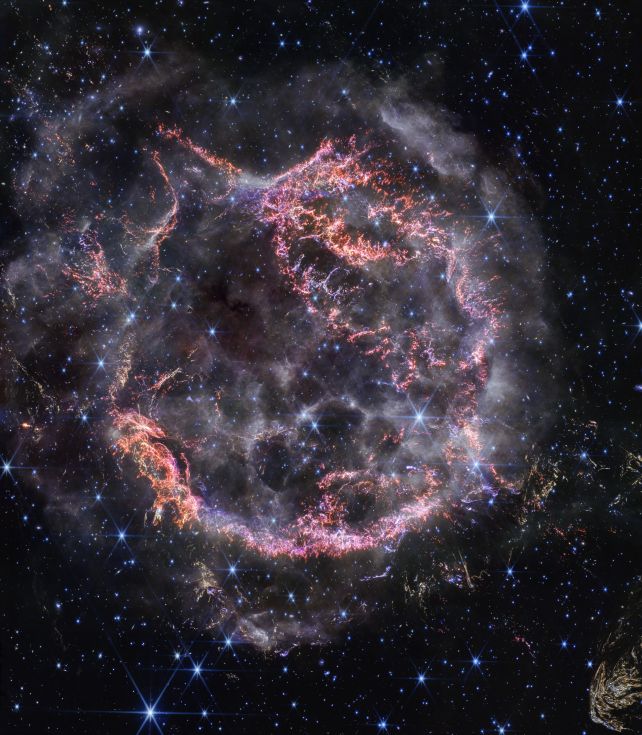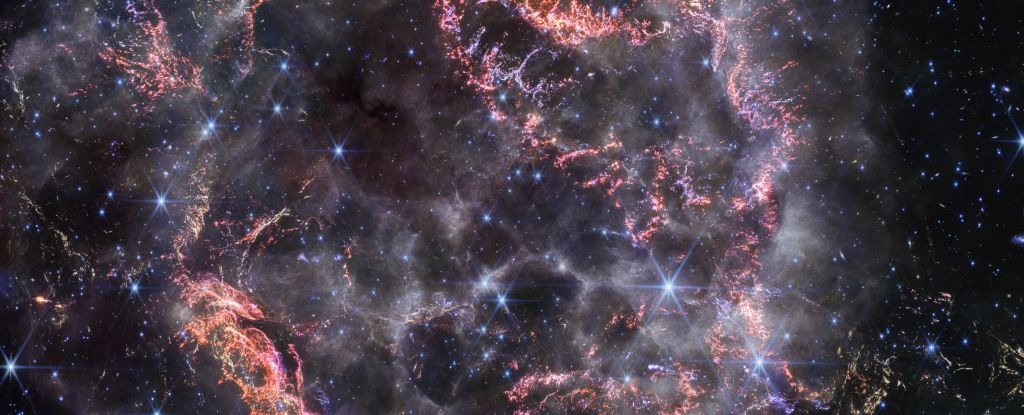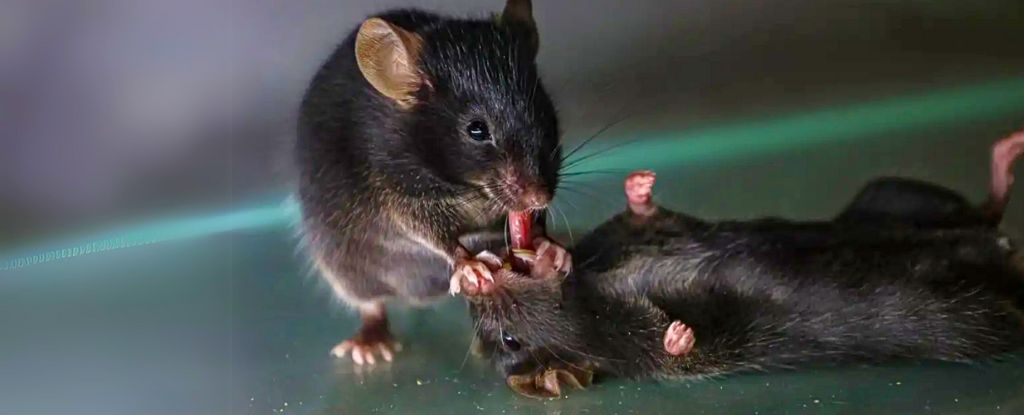We have a new way of looking at one of the most famous exploded stars in the Milky Way.
The James Webb Space Telescope has turned its golden gaze to Cassiopeia A, a spectacular, complex, expanding cloud of hot gas billowing out from a star humanity saw go supernova back in the 1670s. Scanning the wisps and filaments of gas heated by the outward shocks in infrared reveals incredible level of new detail.
This is actually the telescope’s second pass at the famous supernova. In April 2023, the JWST took observations in the mid-infrared wavelength range using its MIRI instrument.
This time the orbiting observatory used its NIRCam instrument to make observations in near-infrared, and the differences between the two images are puzzling scientists.
Located a mere 11,000 light-years from the Solar System, Cassiopeia A is one of the most well-known and -studied objects in the galaxy. Records from the late 17th century indicate that it was spotted by several astronomers, but the supernova remnant itself wasn’t officially recorded until quite sometime later, in 1948.
Nevertheless, it has fascinated astronomers ever since, offering a rare opportunity to study the evolution of an exploded star as its debris expands into space at supersonic speeds.
And since the JWST is the most powerful space telescope ever built, it’d be weird if astronomers didn’t use it to take a gander at Cas A.
The new near-infrared image appears a lot more ephemeral than previous observations in other wavelengths, but that helps scientists study the dynamics of the remnant. And there’s one particularly stunning new feature. In the bottom right corner of the image is a stripey blob that scientists are calling Baby Cas A, because it looks a bit like, well, Cas A’s baby.
It might appear to be close to the supernova remnant, but it’s actually about 170 light-years farther away. And it’s not a supernova itself – it’s light from Cas A that has traveled through space and is now hitting a distant clump of dust, lighting it up.
This phenomenon is known as a light echo, and a few of them have been captured in the new image.
frameborder=”0″ allow=”accelerometer; autoplay; clipboard-write; encrypted-media; gyroscope; picture-in-picture; web-share” allowfullscreen>
There are ropy twists of bright pinky-orange; that’s the inner shell of the explosion – clumps of gas and dust that contain elements such as sulfur, oxygen, argon, and neon that will one day be incorporated into newly forming stars.
“With NIRCam’s resolution, we can now see how the dying star absolutely shattered when it exploded, leaving filaments akin to tiny shards of glass behind,” says astronomer Danny Milisavljevic of Purdue University.
“It’s really unbelievable after all these years studying Cas A to now resolve those details, which are providing us with transformational insight into how this star exploded.”
The smoky outer shell of the remnant is the part that is expanding into interstellar space. It is bright in mid-infrared wavelengths, but too cool to light up in near-infrared. The white light in the image is produced by synchrotron radiation, which is when electrons are accelerated in a spiral around magnetic field lines.

The cause of a patch of light glowing brightly and colored green in mid-infrared in the center-right of the bubble that puzzled scientists is also revealed. In the new NIRCam pic, that region is speckled with what looks like holes, ringed with white and purple indicating ionized gas.
Astronomers now think that the combination of light is caused by expanding ejecta from the supernova catching up to and punching through the material ejected by the star before it exploded.
This is far from the last we’re going to hear about Cas A. It’s a unique laboratory for understanding these processes, and it’s only going to get more fascinating as we continue to watch it evolve.
While we wait for those insights, though, you can explore the image in all its glory on the ESA Webb website.





